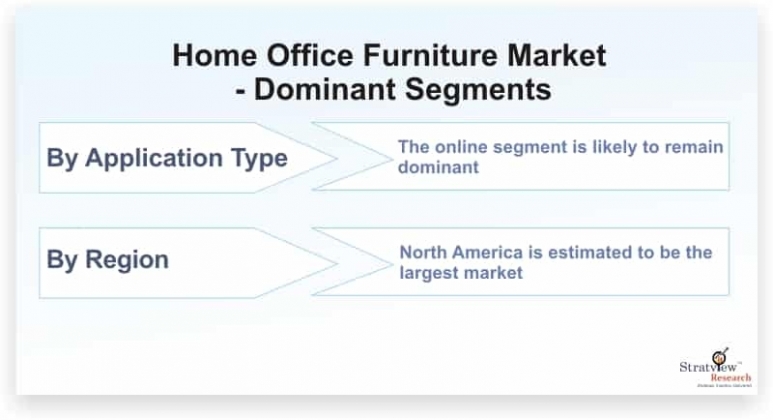Home Office Furniture Market Size, Emerging Trends, Forecasts, and Analysis 2021-2026

SEP 02,2021/IndustryNewsGlobal/ The unexpected shifts in the global markets because of the sudden outbreak of the COVID-19 virus have brought many major and minor tremors to industries of all sizes including the Home Office Furniture Market.
Home Office Furniture Market is likely to witness an impressive CAGR of 6.8% during the forecast period. Growing urbanization, rise in entrepreneurship and work from home culture, and development of multi-functional furniture are the prime factors contributing to the demand for home office furniture. Increasing popularity of smart furniture in urban areas is also one of the key factors driving the market growth.
Home office furniture are the furniture products that are used in the residential and commercial spaces by individuals for their personal home offices. Home office furniture are mainly inclusive of products such as non-upholstered kitchenware, sofas, tablets, chairs, drawers and couches, and are manufactured by plastic and wood material. Rising urbanization in both of the developed and developing countries, along with increasing demand for smart & multipurpose furniture, and increasing residential and commercial spaces is the substantial driving factor of the home office furniture market across the world.
This report studies the market covering a period of 12 years of trend and forecast. The report provides detailed insights into the market dynamics to enable informed business decision making and growth strategy formulation based on the opportunities present in the market.
By Distribution Channel Type
Based on the distribution channel type, the home office furniture market is segmented as flagship stores, specialty stores, online and others. The online segment was the fastest-growing segment of the market in 2020 and is likely to maintain its dominance over the forecast period. Policies such as secured transactions, cash on options, convenient return, and integrated and centralized customer service encourage consumers to purchase furniture online, which is driving the growth of the segment during the forecast period.
By Region
In terms of regions, North America is estimated to be the largest market during the forecast period, with the USA, Canada, and Mexico being the major countries with lucrative growth opportunities. The growth of the region’s market is mainly driven by the rising trend of work from home in the USA. A majority of employers are giving facility to their employees to work remotely, which in turn, is fueling the demand for home offices. People are also involving themselves in other entrepreneurial activities which lead to the high demand for home offices to greet their own personal clients in a safe and confined space. This new trend is also a key factor determining the growth of the market in the region. Europe and Asia-Pacific are also likely to offer promising growth opportunities during the forecast period.
Key Players:
- Ashley Furniture Industries, Inc.
- Haworth Inc.
- Herman Miller Inc.
- HNI Corporation
- Hooker Furniture Corporation
- Inter IKEA Holding B.V.
- Kimball International
- Knoll Inc.
- KOKUYO Co. Ltd.
- Steelcase Inc.
Features of the Report
This report offers high-quality insights and is the outcome of detailed research methodology comprising extensive secondary research, rigorous primary interviews with industry stakeholders and validation and triangulation with Stratview Research’s internal database and statistical tools.
The Home Office Furniture Market analysis report discusses the following heads in great detail:
- Market structure: Overview, industry life cycle analysis, supply chain analysis
- COVID-19 Impact Assessment
- Market environment analysis: Growth drivers and constraints, Porter’s five forces analysis, SWOT analysis
- Market trend and forecast analysis
- Market segment trend and forecast
- Competitive landscape and dynamics: Market share, product portfolio, product launches, etc.
- Attractive market segments and associated growth opportunities
- Emerging trends
- Strategic growth opportunities for the existing and new players
- Key success factors